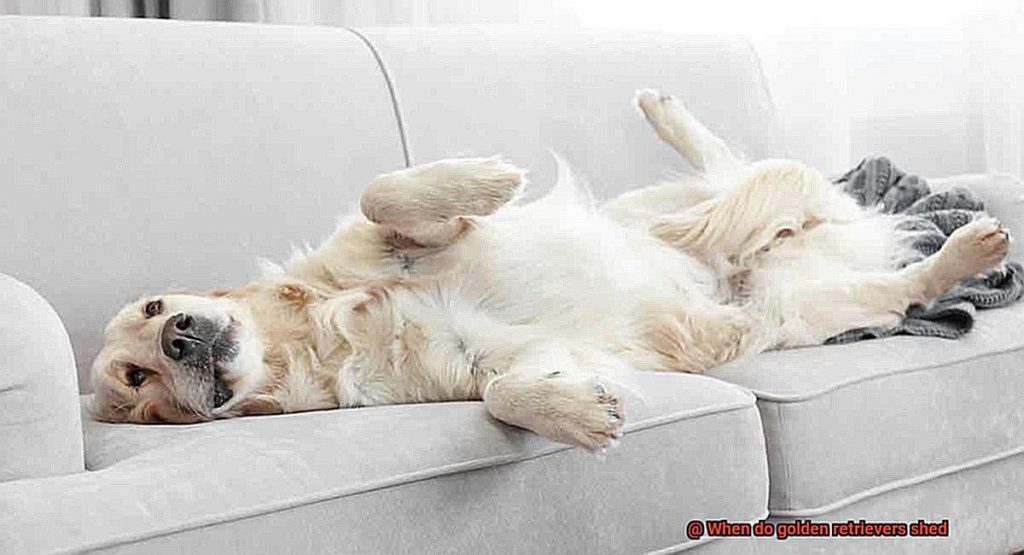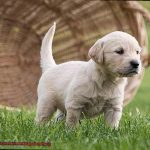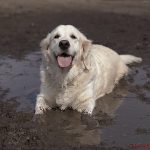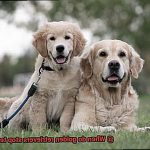Are you a dog lover who adores golden retrievers? If so, you may be curious about when these furry friends shed their luxurious coats. While golden retrievers are known for their stunning fur, shedding is a natural process that helps them remove dead or damaged hair.
But when exactly can you expect your golden retriever to shed? The answer depends on various factors such as age, health, and the time of year. As a responsible pet owner, it’s essential to understand the shedding process and how to prepare for it.
In this blog post, we’ll take a deep dive into the fascinating world of golden retriever shedding. From exploring the different causes of shedding to offering tips and tricks on grooming your furry friend during this time, we’ve got you covered. We’ll even discuss what to expect during different seasons and how to keep your home clean while keeping your beloved pet comfortable.
So whether you’re a seasoned golden retriever owner or simply a dog lover looking for more information, get ready for an exciting journey into the world of golden retriever shedding.
What Are Golden Retrievers?
Contents
Golden Retrievers are a beloved breed of dog that are well-known for their friendly personalities and beautiful, golden coats. However, this stunning coat comes with some shedding, as all dogs shed to some degree. So, in this post, we will delve into the shedding habits of Golden Retrievers and provide some tips on how to manage it.
Golden Retrievers are considered moderate to heavy shedders, meaning they shed their coat throughout the year with periods of heavier shedding. One of the main factors that affects when Golden Retrievers shed is their coat type. They can have either a single or double coat, with double-coated dogs typically shedding more than single-coated dogs.
In addition to coat type, Golden Retrievers also shed more heavily during certain seasons. They tend to shed more in the spring and fall when their coats are transitioning between winter and summer or vice versa. While this shedding is normal and expected, owners should be prepared to do some extra grooming during these times.
Age is another factor that affects when Golden Retrievers shed. Puppies go through two major shedding periods as they mature and develop their adult coats. The first period occurs at around 4-6 months of age when they lose their puppy fur and grow in their adult coat. The second period occurs at around 8-12 months of age when they undergo another shedding phase as their adult coat fully develops.
Although Golden Retrievers do shed quite a bit, there are ways to manage shedding and keep your home clean. Regular brushing can help remove loose fur and prevent mats and tangles, while vacuuming and using lint rollers can help keep your furniture and floors free of hair. Providing your furry friend with a healthy diet and plenty of exercise can also help reduce shedding.
It’s important to note that excessive shedding may be a sign of underlying health issues such as allergies or skin conditions. If you notice your Golden Retriever shedding excessively, it’s essential to work with a veterinarian to identify and treat any underlying health issues.
Coat Types and Shedding in Golden Retrievers
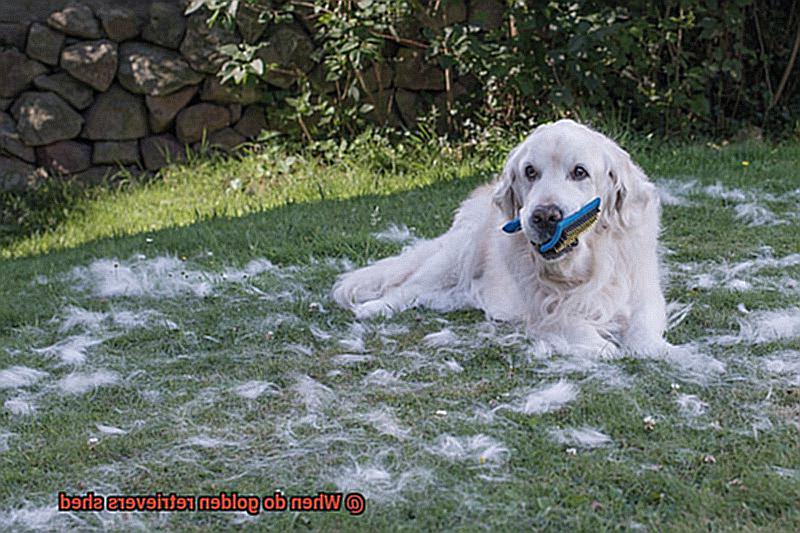
Golden Retrievers are one of the most beloved dog breeds worldwide, known for their friendly temperament and gorgeous golden coat. However, their luscious coat also means they shed quite a bit. Therefore, comprehending the different coat types of Golden Retrievers can help owners better understand when to expect shedding.
Golden Retrievers have two primary coat types: wavy and straight. Wavy coats are the most common and have a thick, long coat with a slight wave, while straight coats are less common, flatter, shorter, and with little or no wave. Both coat types shed year-round, but seasonal changes trigger more intense shedding.
During spring and fall, Golden Retrievers will shed their undercoat to prepare for warmer or cooler weather. This natural process is called “blowing their coat,” and it can result in a significant amount of shedding for several weeks. However, shedding is a natural process that cannot be entirely prevented. Regular grooming is crucial to managing shedding and keeping your dog’s coat healthy.
Brushing your dog’s coat regularly can help remove loose hair and prevent matting, which can lead to excessive shedding. Additionally, giving your dog regular baths can help remove dead hair and keep their skin healthy. Regular grooming sessions can create a stronger bond with your furry friend while also keeping them looking great.
Seasonal Shedding in Golden Retrievers
With their stunning golden coats and friendly personalities, it’s no surprise that they’re one of the most popular breeds around. However, with great beauty comes great responsibility, especially when it comes to their shedding habits.
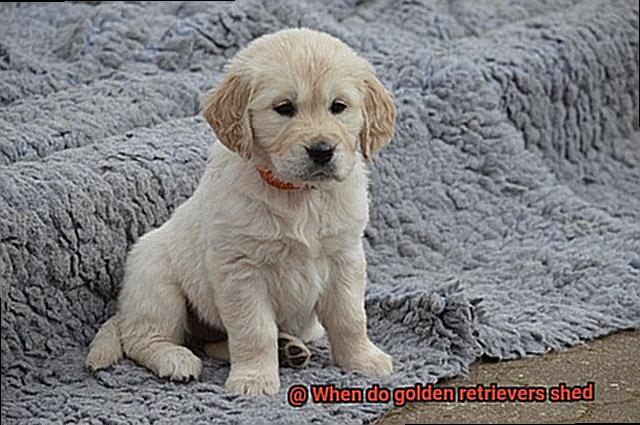
As an expert on seasonal shedding in Golden Retrievers, I’m here to shed some light on this natural process and give you some tips on how to manage it.
Twice a year, during spring and fall, Golden Retrievers shed their undercoats in preparation for the upcoming changes in temperature. While the amount of shedding can vary from dog to dog, it’s worth noting that Golden Retrievers are known for their thick coats, which means they’re more prone to shedding than other breeds.
To help manage this seasonal shedding process, regular grooming is key. Brushing your dog regularly not only removes loose fur but also prevents mats from forming. Plus, it’s an excellent bonding experience for both you and your furry pal.
It’s important to keep an eye on any changes in your Golden Retriever’s shedding patterns. If you notice excessive shedding outside of the regular shedding periods, or if your dog seems stressed or unwell, consult with your veterinarian to rule out any underlying health issues.
Age-Related Shedding in Golden Retrievers
Then you know firsthand about their luscious, fluffy coats and the shedding that comes with them. Shedding is a normal process for all dogs, but Golden Retrievers shed more than most. And just like people, the amount of shedding changes as they age.
Let’s explore age-related shedding in Golden Retrievers. At around six months old, puppies shed their soft and fluffy puppy coat. This shedding is often called “puppy uglies” because it can leave your furry friend looking patchy and a little awkward. But don’t fret – this is just a natural process that lets the puppy’s adult coat grow in.
As your puppy grows into an adult dog, they will shed their coat twice a year, usually in spring and fall. This period, called “blowing their coat,” is when they lose their old fur to make room for new fur. During this time, it’s not unusual to find clumps of fur everywhere from your couch to your car.
Senior Golden Retrievers may experience more shedding due to aging and hormonal changes. As they get older, their skin becomes thinner and less elastic, leading to more shedding. You may also notice bald spots or thinning hair on your senior dog.
But keep in mind that excessive shedding could mean something more serious. If you see your dog shedding excessively or have bald patches, it’s best to consult your veterinarian to rule out any medical conditions.
Tips for Managing Shedding
Golden Retrievers are beloved for their friendly personalities and stunning coats. However, with a beautiful coat comes the responsibility of managing shedding. Golden Retrievers shed all year round, making it challenging to keep up with the amount of fur they leave behind. Here are five tips for managing shedding in Golden Retrievers:
Regular Grooming
Regular grooming is essential to managing shedding. Brush your Golden Retriever’s coat at least once a week to remove loose fur and prevent matting. Use the right type of brush for your dog’s coat, as using the wrong type can damage the fur and skin. Grooming also helps distribute natural oils on your dog’s skin and coat, keeping them healthy and shiny. Plus, it’s an excellent bonding experience for you and your furry friend.
Healthy Diet
Feeding your Golden Retriever high-quality food with plenty of nutrients can help promote healthy skin and coat, which in turn can reduce shedding. Look for dog food that contains essential nutrients like omega-3 and omega-6 fatty acids. These nutrients help keep your dog’s coat healthy and shiny. A balanced diet also ensures that your dog receives all the necessary vitamins and minerals for optimal health.
Clean Home
Keeping your home clean is essential when dealing with shedding dogs. Vacuum regularly and use lint rollers to remove any loose fur on furniture or clothing. It’s also a good idea to wash your dog’s bed and any blankets or towels they use frequently to keep them clean and free of hair. Cleaning up after your Golden Retriever regularly will not only keep your home tidy but also prevent excessive shedding.
Professional Grooming
Regular grooming appointments with a professional groomer can help manage shedding. A groomer can trim your dog’s coat, remove mats or tangles, and give them a thorough bath to clean their skin and coat. They can also provide valuable advice on how to maintain your dog’s coat between grooming appointments. Professional grooming ensures that your dog looks and feels their best, while also reducing the amount of shedding.
Consult with a Veterinarian
If you find that your Golden Retriever is shedding excessively or experiencing any skin problems, it’s important to consult with a veterinarian. They can provide recommendations for managing shedding and ensure that any underlying health issues are addressed. Excessive shedding could be a sign of an underlying health condition, so it’s best to get it checked out by a professional.
Also Read: Do Golden Retrievers shed a lot? – Plott World
Conclusion
In conclusion, owning a Golden Retriever comes with the responsibility of managing shedding. But don’t worry, with a little patience and dedication, you can keep your furry friend comfortable and your home clean.
Shedding patterns in Golden Retrievers vary depending on age, health, and time of year. Regular grooming is essential to remove loose fur and prevent mats and tangles. Vacuuming and lint rolling are also helpful to keep furniture and floors free of hair.
A healthy diet and plenty of exercise can reduce shedding in Golden Retrievers. However, excessive shedding may indicate underlying health issues such as allergies or skin conditions. If you notice this, it’s best to work with a veterinarian to identify and treat any problems.

